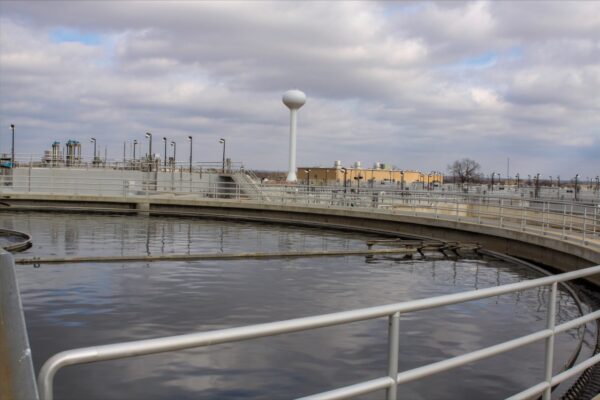A team of University of Texas at Austin researchers has resumed testing Austin’s wastewater for signals of COVID-19 after the Texas Division of Emergency Management gave new funding for the project.
Although Austin’s risk-based COVID-19 guidelines have now been eliminated, Mary Jo Kirisits of the Cockrell School of Engineering said that continuing to monitor the wastewater will give the city advance knowledge of any spikes in cases, which is beneficial as fewer people are getting tested or reporting positive results.
“People are going to get complacent and let their guard down,” said Kirisits, a professor in the Department of Civil, Architectural and Environmental Engineering. “Testing wastewater as a normal course of action will give the city lead time in making important decisions like when to provide more resources such as testing sites and vaccine hubs.”
The coronavirus SARS-CoV-2 is a fecal-shed virus. Knowing that, Kirisits and a team of researchers began taking samples from the city’s two largest wastewater treatment plants starting in summer 2020 with the goal of being able to track spikes of cases in Austin before they showed up in diagnostic testing.
Although wastewater monitoring generally indicated spikes in clinical cases a few days before they occurred, the testing did not give the two-week lead time desired. This might change as cases wane and fewer COVID-19 tests are administered.
“The only way to get that two-week advance notice is when the cases are so low you can spot a difference,” said Kerry Kinney, a professor in the Department of Civil, Architectural and Environmental Engineering. “It will be interesting doing monitoring going forward to see when cases rise. At this point, we haven’t gotten out of the pandemic to monitor for its resurgence.”
Initial funding for the project was provided by the Cockrell School and two research grand challenges at UT Austin — Planet Texas 2050 and Whole Communities–Whole Health. However, when that money ran out in the fall of 2021, further testing was put on hold.
Despite this, Kirisits still went out to the treatment plants most days during the winter, collecting samples to be sure that when they did receive additional funding, they would be able to record the surge in omicron cases that happened around the holidays.
The Texas Division of Emergency Management has awarded the team a $150,000 grant to resume its work.
Sampling is currently ongoing at the Walnut Creek and South Austin Regional wastewater treatment plants. The specimens will be sent to Biota Technology for sequencing and “variant calling,” which means that the percentage of SARS-CoV-2 in each variant class will be determined. Since the variants have some differences in associated symptoms and some variants are more contagious than others, this will allow residents and health care providers to know what to look for and when to test.
The research team also plans to deploy 3D-printed sampling devices at several sites on the UT Austin campus to be able to tell whether specific buildings or residence halls are seeing spikes. These devices can be dropped into maintenance holes for sampling over a specific period to monitor for the virus in certain locations. These devices are inexpensive to make and do not require a power source during deployment, which makes them convenient for sampling.
Kirisits said wastewater is also useful for tracking other pathogens and disease markers, including for diabetes, so ongoing research is a crucial tool for public health.
“There are so many things we can track in wastewater, and we should be doing that,” she said. “Once you have those samples, you might as well interrogate for multiple markers associated with human disease.”




